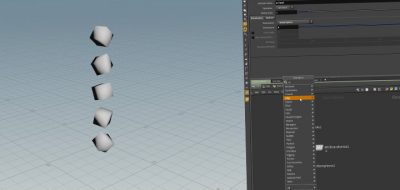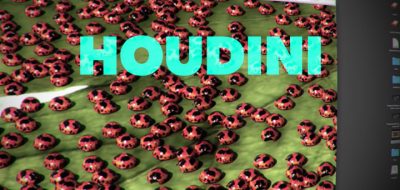Rohan Dalvi offers an explanation on using packed primitives in Houdini 13, covering in more detail what was briefly discussed in his Floating Islands training series. Here Rohan shows how to create packed primitives and how to use them in large scale instancing situations.
This video covers Packed Primitives in Houdini 13 and their usage in Instancing
Packed Primitives
Packed Primitives are a new in Houdini 13 working very much as a proxy. Packed Primitives allow you to treat a piece of geometry as a a single un-editable entity in Houdini. Packed primitives are much faster and use much less memory in a complex scene.
There are actually a few different types of packed primitives in Houdini 13, On-disk primitives that just have a file path pointing to the geometry on disk, In-memory packed primitives that reside in RAM, Packed fragments, which are similar to in-memory primitives containing a read only reference to another primitive, and the Alembic packed primitive which have a file path pointing to an Alembic file, and a reference to an Alembic node inside the file.
If you are looking to dive more into Houdini 13 and haven’t checked out Rohan’s training series for Houdini, you should, there are a couple of great titles there already, the Floating Islands training covers various aspects including terrain modeling and sculpting, generating large quantities of plants and vegetation in Houdini. The plants and trees are created using L-Systems. The training also covers Rigid Body Dynamics, Particles and Fluids to create certain elements of the image.




